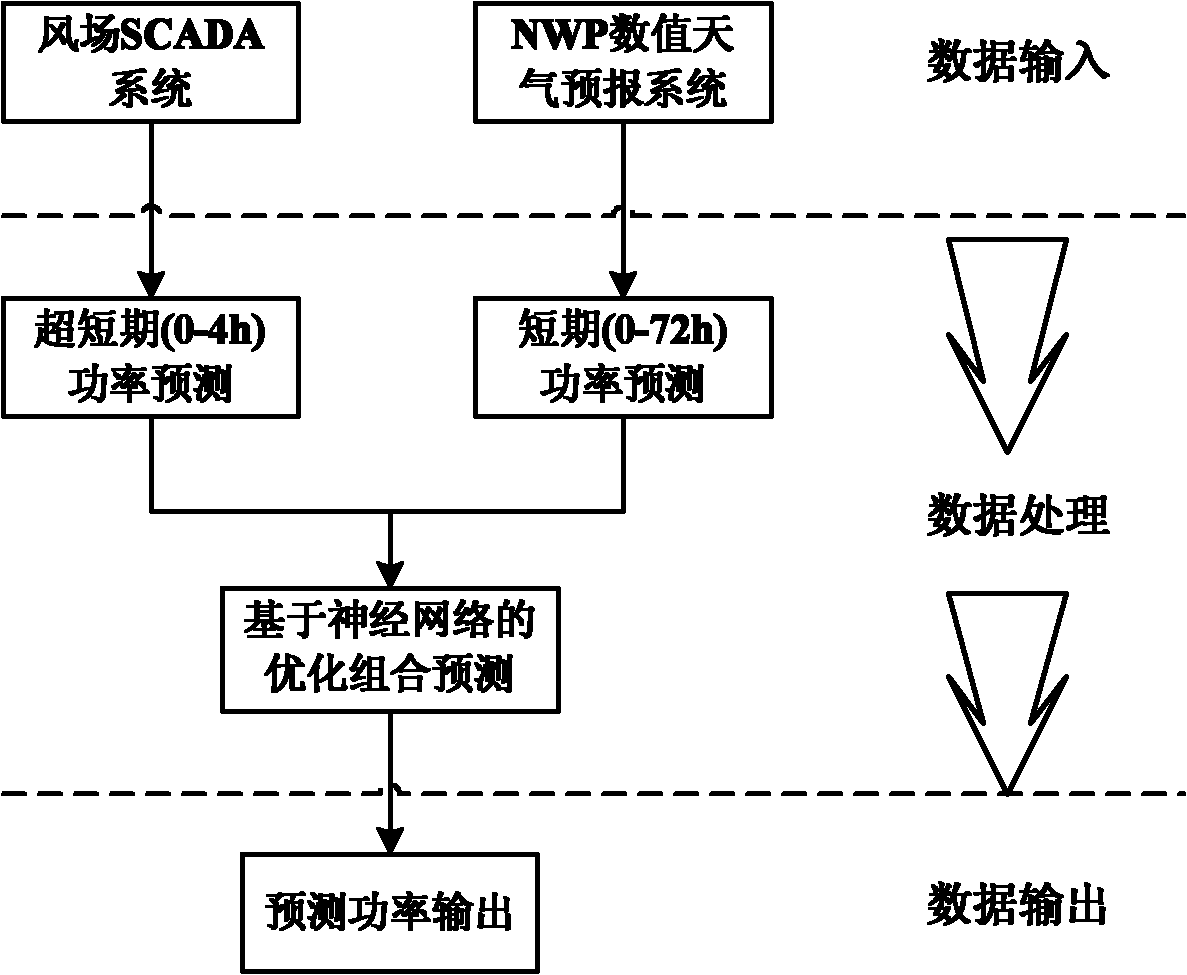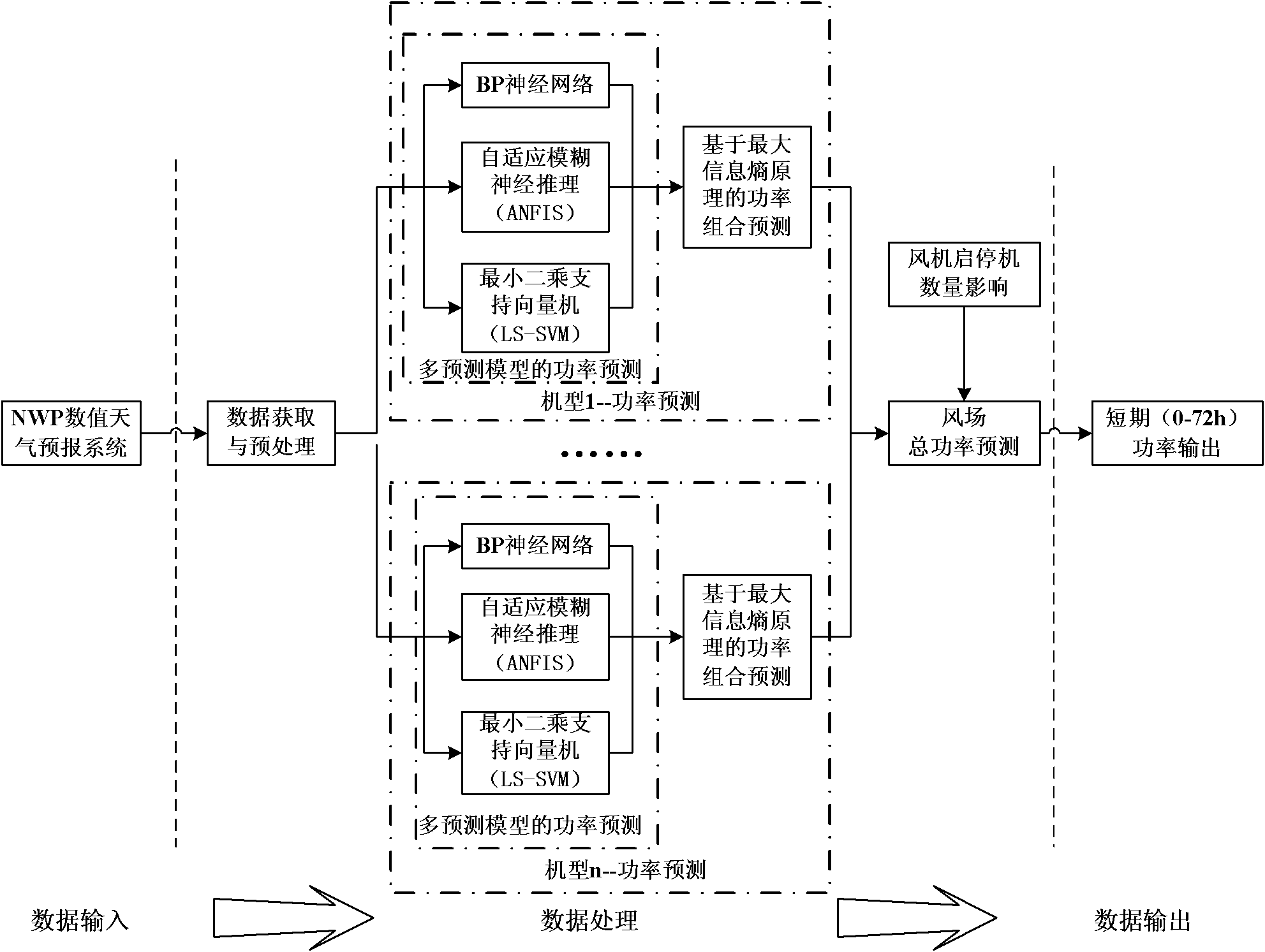Method for forecasting short-term power in wind power station
A technology of power forecasting and short-term forecasting, applied in wind power generation, wind turbines, control of wind turbines, etc., can solve the problems of unsuitable accuracy and low precision, and achieve the effect of improving accuracy
- Summary
- Abstract
- Description
- Claims
- Application Information
AI Technical Summary
Problems solved by technology
Method used
Image
Examples
Embodiment Construction
[0031] The preferred embodiments will be described in detail below in conjunction with the accompanying drawings. It should be emphasized that the following description is only exemplary and not intended to limit the scope of the invention and its application.
[0032] figure 1 It is an overall flow chart of short-term power prediction of wind farms provided by the present invention. Wind farm short-term power prediction includes three steps: a. Ultra-short-term (0-4h) power prediction; taking the measured wind speed, power and other data provided by the wind farm SCADA (Supervisory Control And Data Acquisition, data acquisition and monitoring) system as input, through Data processing methods such as the time series method and the power prediction method based on the combination of wavelet transform and neural network, output the predicted power of 0-4h, and the time resolution is 15 minutes; b. Short-term (0-72h) power prediction; NWP ( Numerical weather forecast) data prov...
PUM
 Login to View More
Login to View More Abstract
Description
Claims
Application Information
 Login to View More
Login to View More - R&D
- Intellectual Property
- Life Sciences
- Materials
- Tech Scout
- Unparalleled Data Quality
- Higher Quality Content
- 60% Fewer Hallucinations
Browse by: Latest US Patents, China's latest patents, Technical Efficacy Thesaurus, Application Domain, Technology Topic, Popular Technical Reports.
© 2025 PatSnap. All rights reserved.Legal|Privacy policy|Modern Slavery Act Transparency Statement|Sitemap|About US| Contact US: help@patsnap.com



